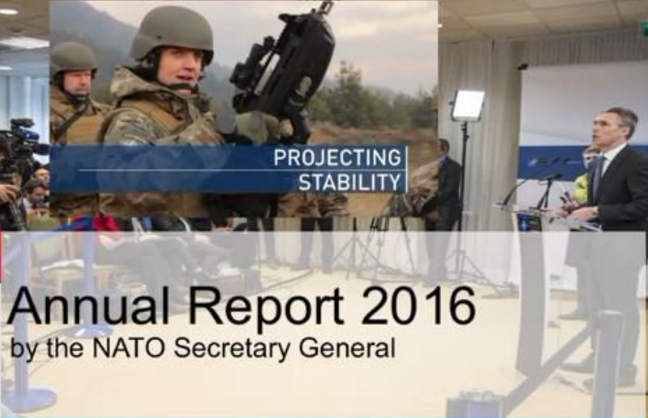NATO Secretary General Jens Stoltenberg published his annual report today (Monday 13 March), showing how in 2016 the Alliance, “took further steps to keep our almost one billion citizens safe.”
The report highlights how NATO is adapting to the new security environment by strengthening its collective defence and projecting stability beyond its borders.
Four multinational battlegroups are being deployed to Estonia, Latvia, Lithuania and Poland. At least seventeen Allied countries will contribute troops.
While enchancing its deterrence measures in the eastern part of the Alliance, NATO has had political dialogue with Russia and held three meetings of the NATO-Russia Council last year.
The Secretary General underlined how the Alliance is doing more to project stability, such as by training local forces in Afghanistan and Iraq to fight terrorism. NATO has also sent training teams to countries including Jordan, Morocco and Tunisia.
NATO AWACS planes are supporting the Global Coalition to Counter-ISIL and a new Intelligence Division has been created by NATO to deepen its understanding of the threats it faces.
Mr Stoltenberg explained how the Alliance has turned a corner on defence spending. In 2016 twenty-three Allies increased their defence expenditure in real terms by 3.8 %, which added up to ten billion US dollars.
The Secretary General confirmed only five Allies spent 2% or more of GDP on defence in 2016. He said, “It is realistic that all Allies should reach this goal. All Allies have agreed to it at the highest level and it can be done.”
Mr Stoltenberg pointed out European Allies together spent 2% of GDP on defence as recently as the year 2000. He was encouraged that Romania plans to reach 2% this year and both Latvia and Lithuania expect to do the same in 2018.
The Secretary General encouraged Allies to redouble their efforts on defence spending and said it would be a key focus at the upcoming meeting of NATO leaders.
The annual report provides an overview of how NATO protected its citizens and projected stability in 2016. It includes details on how NATO is enhancing deterrence and defence, engaging in dialogue, investing in security, improving capabilities, supporting the fight against terrorism, building relationships, sharing expertise, advancing the role of women in peace and security, and adapting as an institution.
Below you will find short descriptions of – as well as direct links to – the elements of the annual report.
- Foreword
- For all who serve
- Deterrence, Defence & Dialogue
- Investing in Security
- Improving Capabilities
- Projecting Stability
- Projecting Stability: Cultivating Partnerships
- Promoting the Role of Women
- Organisation
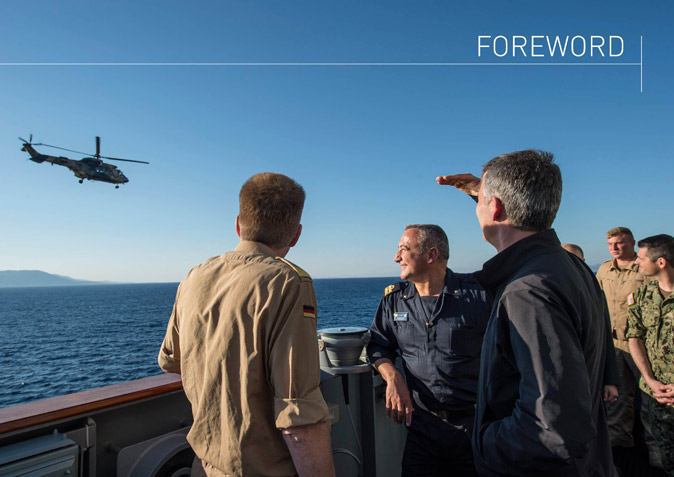
At no time since the end of the Cold War has the NATO Alliance faced greater challenges to our security than it does today.
But NATO is the most successful alliance in history because it has been able to change as the world has changed. For the first 40 years of its life, the Alliance’s focus was collective defence. When the Berlin Wall came down, our focus shifted to crisis management beyond our borders – intervening to stop large-scale bloodshed and keep the peace in the Western Balkans, fighting terrorism in Afghanistan, and tackling piracy off the Horn of Africa.
There is still one property with special status designation in Kosovo that is protected by KFOR
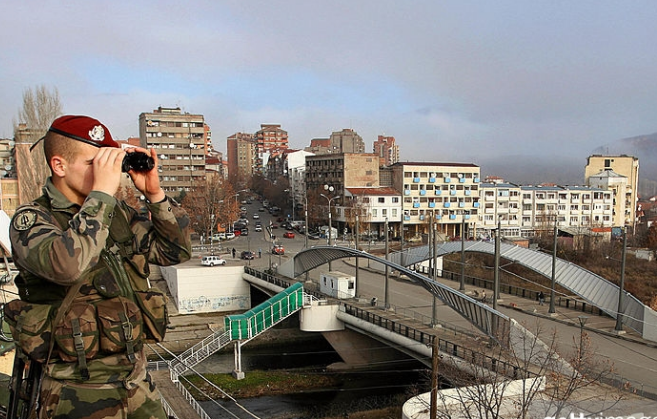 The Alliance remains committed to the security of the Western Balkans region. In Kosovo, the NATOled Kosovo Force (KFOR) has continued to support wider international efforts to build peace and stability in the region, under United Nations (UN) Security Council Resolution 1244. Dating back to 1999, KFOR is NATO’s longest-lasting operation and aims to:
The Alliance remains committed to the security of the Western Balkans region. In Kosovo, the NATOled Kosovo Force (KFOR) has continued to support wider international efforts to build peace and stability in the region, under United Nations (UN) Security Council Resolution 1244. Dating back to 1999, KFOR is NATO’s longest-lasting operation and aims to:
– contribute to a safe and secure environment
– support the international humanitarian effort and
coordinate with the international civil presence
– support the development of a stable, democratic,
multi-ethnic and peaceful Kosovo
– support the development of the Kosovo Security
Force
In 2016, approximately 4,500 troops from 31 NATO member and partner countries worked together to uphold a safe and secure environment in Kosovo, and to maintain freedom of movement for all its citizens and communities.
KFOR’s primary role remains that of a “third responder”, providing support as needed to the Kosovo authorities and the European Union Rule of Law Mission (EULEX). However, thanks to the significantly improved security situation, KFOR was at no time during the year required to intervene.
KFOR is now also able to provide support to crisis response efforts, if and when circumstances allow. For instance, in August, KFOR provided engineering and logistic assets to the former Yugoslav Republic of Macedonia when the country was hit by heavy floods. In November, a helicopter assigned to KFOR carried out an emergency medical evacuation of a newborn baby from a hospital in Pristina to another in Belgrade.
More broadly, NATO fully supports the EU-facilitated dialogue that began in 2013 between Belgrade and Pristina, which represents an important opportunity to normalise relations. Several agreements have already been signed by both parties and their full implementation is now key. In 2015, the Stabilisation and Association Agreement between Kosovo and the EU also entered into force. Under the framework of the Balkans Aviation Normalisation Meeting process, efforts are also underway to identify solutions for the normalisation of the lower airspace over Kosovo in coordination with relevant national authorities and representatives of the EU and the international aviation community.
As part of the wider challenges in the Western Balkans, Kosovo has also had to address the threat of growing extremism, radicalisation, and the return of foreign fighters, though there have been no terrorist incidents. KFOR’s presence remains essential for projecting stability in the region.
Capacity-building Efforts in Kosovo
NATO’s role in Kosovo also involves capacitybuilding efforts. NATO has supervised the standup and training of a multi-ethnic, professional and civilian-controlled Kosovo Security Force (KSF). The KSF is a lightly-armed volunteer force, with no heavy weapons such as tanks or heavy artillery and no offensive air capability. It has primary responsibility for security tasks such as emergency response, explosive ordnance disposal, management of hazardous material, fire-fighting and civil protection.
NATO support is provided by the NATO Advisory and Liaison Team which consists of approximately 40 military and civilian personnel. Based in Pristina, this body was set up in 2016 and is providing practical assistance and advice to the security organisations in Kosovo in areas such as logistics, procurement and finance, force development and planning, and leadership development.
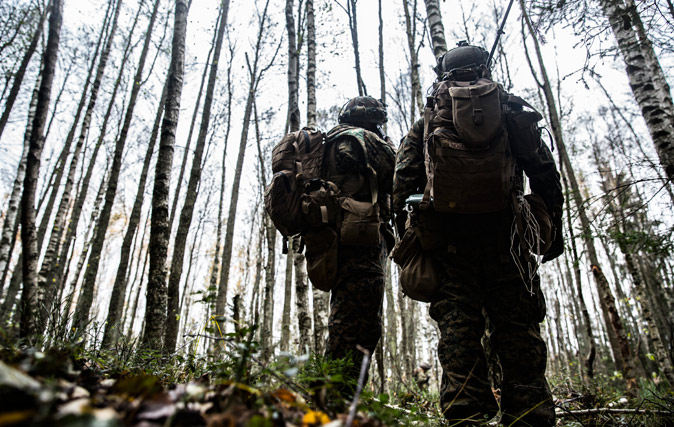
For All Who Serve
NATO’s commitment to safeguarding the freedom and security of all its members is made possible by the service of men and women from across its member and partner countries.
In 2016, tens of thousands of Allied service members were deployed on land, in the air, and at sea to provide for NATO’s defence and to project stability beyond NATO’s borders. Whether engaged in security operations, military exercises, or training missions, the security and stability of the Alliance would not be possible without their contributions.
NATO recognises the dedication of all who serve. The Alliance owes a debt of gratitude to every man and woman in service for the risks they take and the sacrifices they and their families make while serving NATO’s common purposes and values.
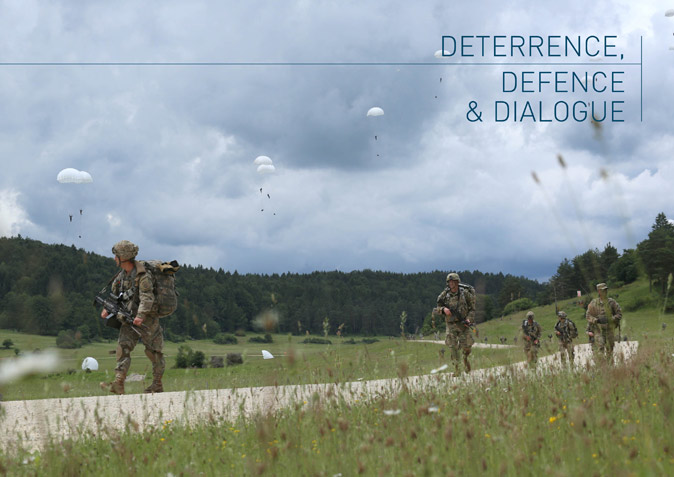 Preventing conflict means being able to deter and defend against any potential security threat. In recent years, NATO has responded to a series of new challenges with the largest reinforcement of its collective defence in a generation. At the same time, as part of an overall approach to its collective security, the Alliance seeks to improve transparency and reduce the risk of escalation by engaging in meaningful dialogue with Russia.
Preventing conflict means being able to deter and defend against any potential security threat. In recent years, NATO has responded to a series of new challenges with the largest reinforcement of its collective defence in a generation. At the same time, as part of an overall approach to its collective security, the Alliance seeks to improve transparency and reduce the risk of escalation by engaging in meaningful dialogue with Russia.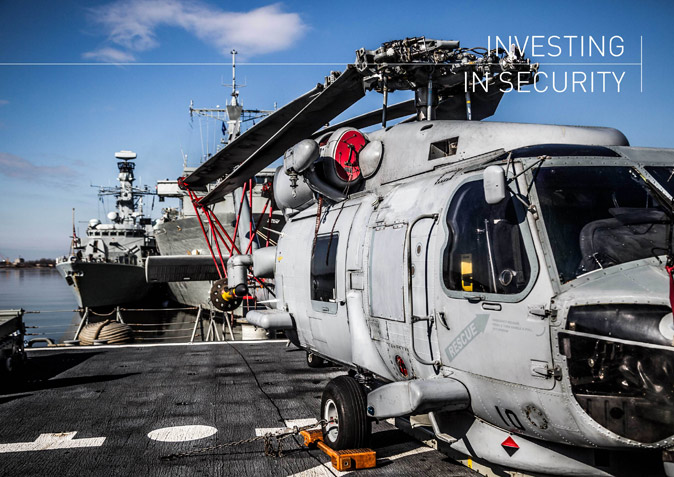
NATO is committed to defending its nearly one billion citizens in Europe and North America. Fulfilling this commitment requires that Allies understand the changing security environment, agree on policies for how to address the challenges and threats, develop and invest in the capabilities required to implement those policies, and resolve to use their capabilities when required. Each of these elements is essential for NATO to fulfil its purpose of safeguarding the freedom and security of all its members.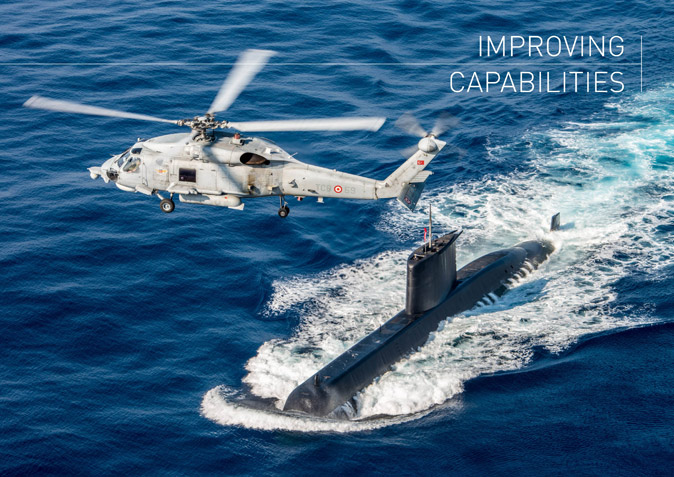
NATO’s modern defence posture is based on an effective combination of cutting-edge weapons systems and platforms and forces trained to work together seamlessly. As important as it is that Allies invest in defence, it is also critical that those funds are invested in the right capabilities. NATO plays an important role in assessing what capabilities the Alliance needs, setting targets for national or collective development of capabilities, and facilitating national, multinational and collective capability development and innovation.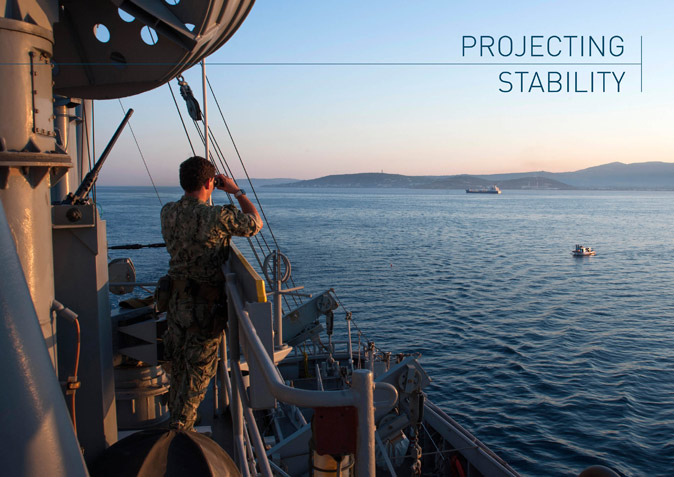
Providing for the security of the Alliance requires not only a strong deterrence and defence posture but also the ability to project stability and strengthen security beyond NATO’s borders. For NATO, this involves a range of activities including providing training and support to countries such as Iraq and Afghanistan, conducting or contributing to missions on land, at sea and in the air, and cultivating relationships with partners around the world
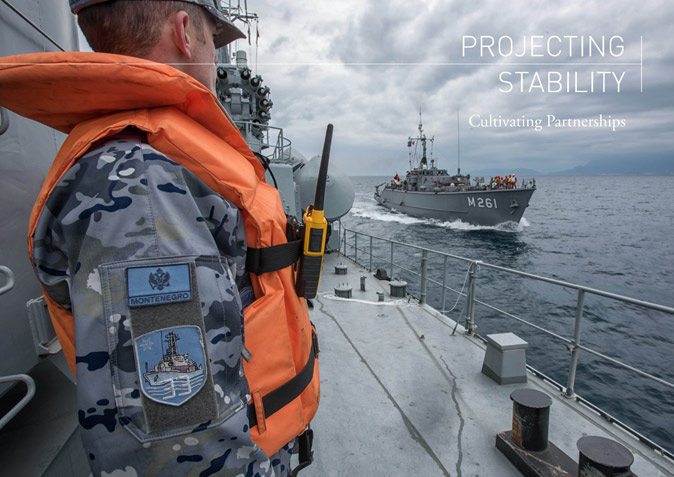 NATO maintains a broad and diverse network of partnerships with countries in the Euro-Atlantic region and beyond. In 2016, partners continued to be involved in many of the core activities that take place at NATO.
NATO maintains a broad and diverse network of partnerships with countries in the Euro-Atlantic region and beyond. In 2016, partners continued to be involved in many of the core activities that take place at NATO.
Partners have been integrated across NATO’s activities and agenda, often contributing sideby- side with Allies. Through its partnerships, NATO helps countries to strengthen their ability to safeguard their own security, both at home and as part of international missions.
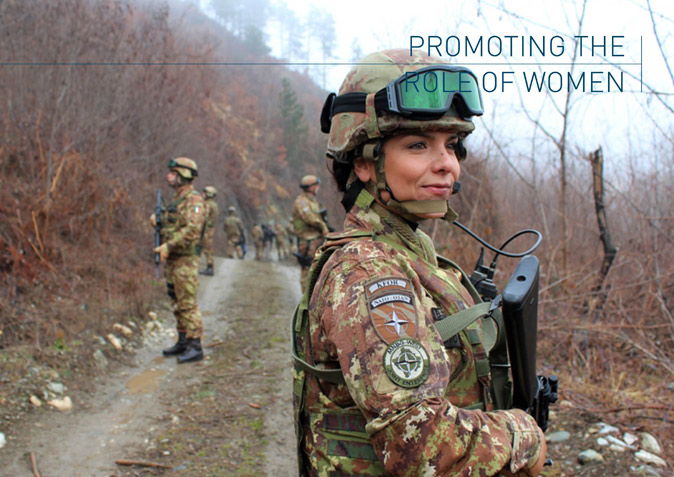 At the Warsaw Summit in July 2016, NATO leaders reiterated their belief that the empowerment of women at NATO and in the military make the Alliance stronger. If peace is to be sustainable, it must be inclusive. To that end, NATO and its partners are working together to promote the role of women in peace and security as part of their commitment to the implementation of UN Security Council Resolution (UNSCR) 1325 and related Resolutions.
At the Warsaw Summit in July 2016, NATO leaders reiterated their belief that the empowerment of women at NATO and in the military make the Alliance stronger. If peace is to be sustainable, it must be inclusive. To that end, NATO and its partners are working together to promote the role of women in peace and security as part of their commitment to the implementation of UN Security Council Resolution (UNSCR) 1325 and related Resolutions.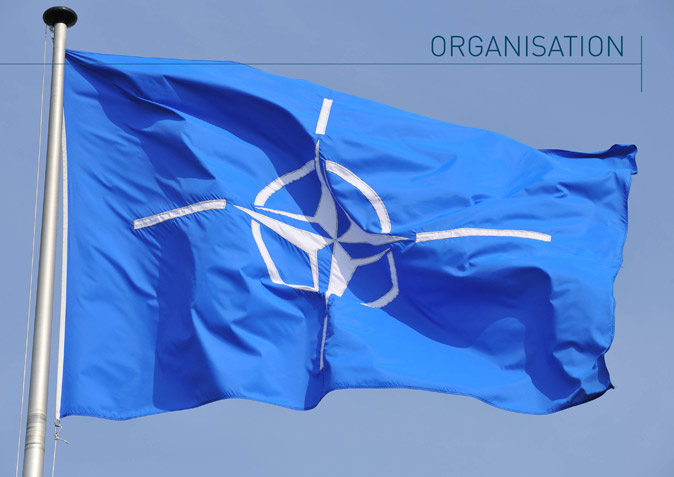
NATO is a political-military alliance of 28 countries. The Organization itself includes a number of structures that support the everyday work of the Alliance. Throughout 2016, NATO continued to implement innovative ways of working in order to improve its overall flexibility, effectiveness, efficiency and accountability despite a challenging resource environment. NATO also continues to adapt its processes and structures to ensure that it is adaptable by design and inherently flexible, resilient, and responsive to any threat. To this end, NATO continued to rigorously pursue improvements to better integrate resources and work strands, including by adopting modern and innovative approaches and ways of working. These efforts will help improve prioritisation and better align resources so that the workforce, both civilian and military, is well placed to support the achievement of NATO’s top priorities.

